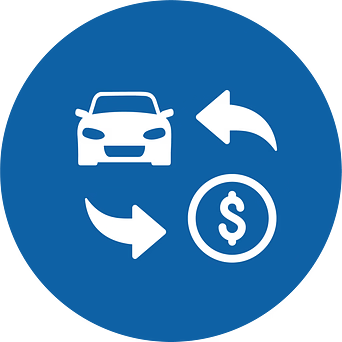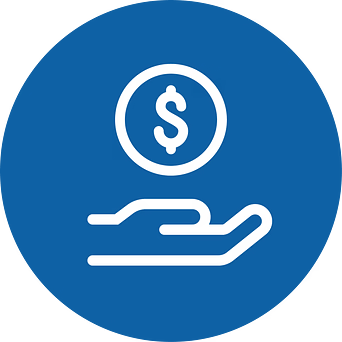People are amazing creatures. They astound me every day with their passion, intelligence and ability to succeed. But, at the same time, human beings are very good at convincing themselves to believe in things that may not be true. Sure, it might keep those people happy and help them sleep at night, but slowly, the truth will seep in until it’s time for a wake up call. It’s like cheating at solitaire: you’re cruising along at first, but in the end, the win means nothing because you’ve been deceiving yourself all along.
To stay ahead in the car repair industry, be willing to re-calibrate your goals, change your business practices, and adapt, or risk become obsolete. In 2008, American car makers stepped up and started making better cars: just look at all of the new Ford, GM, and Tesla cars today. These companies are adapting to today’s drivers, and much of it, I believe, was caused by the recession.
The dilemma is that the work we focus on is directly in front of us. We focus on how many jobs we have on the shop floor, where our numbers are sitting for the month, which techs are out sick or on vacation. In the everyday shuffle, we lose track of the big picture and the things that are truly important to our businesses.
We need to realize that our market is changing at a shocking pace, and that we need to adapt with it or risk fading away faster than pay phones. When the economy is good, everyone gets fat and happy, but when things go sideways, those that aren’t changing are falling behind.
Here are three major changes happening in this industry that are inevitable and evolving every day.
Less Service, Less Touch Time, Less $$
Our main problem is that we made these cars too well. In the old days, you saw your service adviser or local mechanic at least 4-6 times every year, more if you encountered any serious issues with your engine or transmission. Oil changes back then were done every 3,000 miles, spark plugs every 12,000 miles and coolant every 24,000 miles or less; it was a good time to be in the repair industry, indeed. But today, we are all aware of the fact that maintenance service intervals are fewer, and that means considerably less revenue. This also means that if you want to establish a solid relationship with your customers, it’s a lot tougher, since you only meet them once or twice a year. It’s a matter of “out of sight, out of mind”. To make it even more tricky, the average length of vehicle ownership is now at 79.3 months– an all-time high, and a scary number for many service directors all over the country.
Parts Aren’t Breaking Either
Everyone will agree that the aftermarket is catching up with the OEs in many areas, and parts are made better overall. 20 years ago, you had to have your muffler and exhaust system replaced every two years or so because they rusted out. Struts went bad faster, and so did all of the early electronic components in cars built in the 1990s. Your brakes were good for roughly 20,000 miles before having to be replaced altogether, but now they last forever! Those good old days are long gone and they’re not coming back. Instead of your customers running to you with reports of strange sounds coming from beneath their hoods, now we have check engine lights that come on when parts fail. Sure, you have to set codes and sensors, and computers have to be replaced occasionally. Regardless, these solid state parts are much more dependable than the mechanical parts of the distant past.
Smarter and More Discerning Consumers
A collision center director recently told me a surprising story: one of his customers brought a mil gauge with him when he picked up his car, to make sure its new paint was up to specs. He was a Hyundai owner! Today’s car owners expect more service now, and if they don’t get it, they can easily find someone else to do the work via Internet searches, review sites, and referrals. To accommodate the savvier customer, service departments need to step up and placate this new generation, which has more information about their vehicles than ever.
So, now that you’ve been given a wake-up call, what can you do as a service director or shop owner to thrive in today’s industry? The answer: become more convenient for your customers and use the newest technology to achieve it. Reach out to the Gen X and Gen Y market more. Make certain that your prices are competitive in your region. Be more attentive and engage with your clients more than ever. Answer your phones, have your crew looking sharp, and make sure that every repair is seamless and of the highest quality, and you will see positive results immediately– and more over time.

 Harmony AI
Harmony AI Intelligent Appointments
Intelligent Appointments Tablet Vehicle Check-In
Tablet Vehicle Check-In Digital MPI
Digital MPI UpdatePromise App
UpdatePromise App AI-Driven Status Updates
AI-Driven Status Updates Dashboard Analytics
Dashboard Analytics AutoRepair-Review.com
AutoRepair-Review.com Full Merchant Services
Full Merchant Services Clover & Payment Devices
Clover & Payment Devices Sunbit
Sunbit SmartPath Service
SmartPath Service MONOGRAM Service
MONOGRAM Service Honda
Honda Acura
Acura Genesis
Genesis Audi
Audi Service Lounge Podcast
Service Lounge Podcast All Features
All Features

